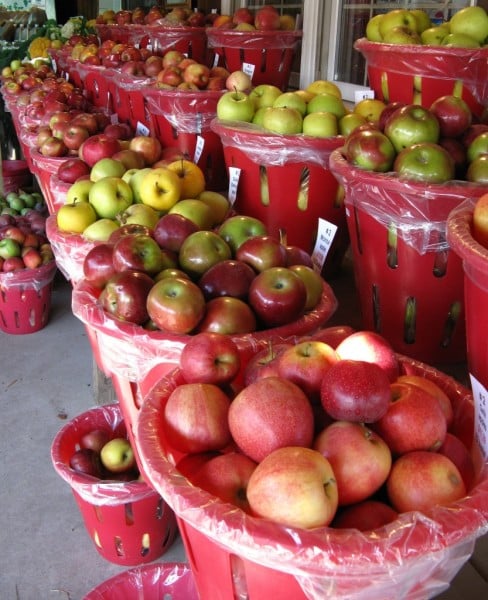Canning applesauce and apple pie filling is a great way to take advantage of early season apples and preserve the taste you know you will be craving around the holidays. Here are our recipes for homemade, no-sugar added applesauce and homemade apple pie filling.
PrintHomemade Applesauce
- Yield: 2 quarts 1x
- Category: Sauce
Ingredients
Scale
- 6 pounds sweet apples such as Gala, Sansa or Honeycrisp
- 2 cups water
- 1 teaspoon cinnamon
Instructions
- Wash apples well. Peel them if you are canning, and chop them into 1-inch pieces.
- Combine apples and water and bring to a boil, then cover and simmer for 20-30 minutes, until apples are soft and mashable.
- Uncover and simmer about 12 minutes until liquid evaporates. Mash the apples well with a fork.
- Stir in cinnamon.
- Cool before serving. If canning, keep hot.
Canning Applesauce and Apple Pie Filling
This recipe and canning instructions are also available in our cookbook, Savoring the Seasons at Weaver’s Orchard!
Ingredients
Scale
- 18 medium-sized apples
- 2 cups sugar
- ¼ cup flour
- 2 teaspoons cinnamon
- 2 tablespoons lemon juice
Instructions
- Wash, peel, core and slice apples. In a large bowl mix apples with remaining ingredients and let stand for thirty minutes, stirring occasionally.
- Place apples in a large kettle and bring to a boil. Reduce heat and simmer for thirty minutes, stirring occasionally, until mixture thickens.
- After boiling the mixture, pour into warmed jars.
- Firmly pack the mixture down in the jar, wipe the lip of the jar and place canning lid on top. Secure the metallic ring around the jar.
- Place jars in a water bath for twenty minutes.
Want more info about safe canning procedures? Take a look at this article from the Penn State Agricultural Extension.

